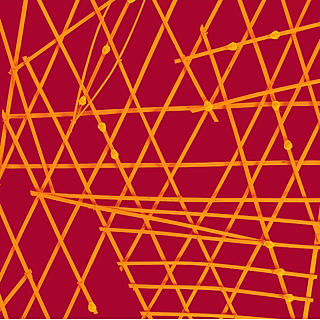The Cargo Cults of Melanesia
- Admin
- Jul 28, 2017
- 3 min read
At the end of the nineteenth century, in the wake of successive colonial encounters between European colonists and the indigenous Melanesian population, peculiar millenarian movements began to arise in the South Pacific islands. These disparate, but conceptually and materially connected movements shared a common element: the belief that European colonists were intercepting a largess of desirable Western goods and material wealth that the ancestors of the Melanesians were trying to deliver to them from beyond the island. In order to attain these possessions, and thus thwart Western attempts at interception, the Melanesians began to impersonate the Europeans in order to obfuscate their own identities and gain access to the goods delivered by their ancestors that they believed were rightfully theirs. As a result, these movements were soon given the moniker “cargo cults”, as they were focused on the delivery of “cargo”, but also, as the ‘cult’ aspect suggests, tended to be organized around a central charismatic figure, who impersonating a European identity, promised this delivery at the dawn of a new millennium.
Perhaps the most emblematic example of this reconstitution of Western identity and culture can be seen in the John Frum cult of Vanuatu, where members worship the eponymous American serviceman (“John From America”). In this cult, members enact military drills with phoney wooden guns, dress up as soldiers, and raise the Star-Spangled Banner in devotion of the semi-mythical, messianic figure. In adopting the identity of US soldiers, not only do they mimic the appearance and behaviours of Western subjects, but also go as far as aping their artificial trappings too, by manufacturing sham radios and radio masts from bamboo (ignorant of their true use), as well as fabricating replica planes and runways in anticipation of the arrival of cargo.
In addition to military rituals, Cargo cults have also imitated other facets of European identity, beliefs, and behaviours. Indeed, cases have been reported of cults mimicking“the minute gestures, mannerisms, and speech patterns of Europeans” in the process of ‘becoming white’ (Lattas 1998: 233). These include a set of identifiable Western actions or “movements” characterized as the “handshake movement” and “the suitcase movement”, among others. There are also records of the existence of specific cults organized “around having their own offices, (also known as “hot houses”), police forces, or around people finding their own banks and even maintaining their own forms of bureaucracy and accounting (Ibid.: 43).” The aping of these actions led Williams to characterize these Vailala movements as “automaniacs” as well as “mad”, without any shred of realization that the Europeans they imitated were, in some sense, also susceptible to such a characterization if we bear in mind that office workers in the West are required to plough through piles of miscellaneous paperwork each and every day.
Although these examples illustrate the extent of European influence on traditional Melanesian culture, they also reveal how the mimetic process became a form of empowerment as cargo cults “redefined the ritual terms and performances of becoming white (Ibid.: 40).” Cargo cults therefore rebuke colonial discourse’s claims regarding the passivity of colonized subjects by revealing how they “actively incorporate and transform western beliefs and practices into their own narratives of life, sexuality, and death (Ibid.).”
Although the imitation illustrated above is underpinned by local forces, the basic mentality of cargo cults can be used as a powerful theoretical tool to critique the ostensible superiority of Western moral and cultural standards outside of this immediate context. With this in mind, to trivialize or to offhandedly dismiss cargo cults as humorous, or even psychotic, would be in itself a foolish and hubristic act, especially given that these cults only emerged as a product of the lunacy of Western colonialism in the first place.
__________________________________________________________________________
Lattas, A. (1998). Cultures of Secrecy: Reinventing Race in Bush Kaliai Cargo Cults. 1st ed. Madison: University of Wisconsin Press.
Jebens, H. (2004). Cargo, cult, and culture critique. 1st ed. Honolulu: University of Hawai'i Press.
Larlham, D. (2012). The Meaning in Mimesis: Philosophy, Aesthetics, Acting Theory. Ph.D. Columbia University.
Lindstrom, L. (2013). Cargo Cults - Anthropology - Oxford Bibliographies - obo. [online] Oxfordbibliographies.com. Available at: http://www.oxfordbibliographies.com/view/document/obo-9780199766567/obo-9780199766567-0108.xml [Accessed 7 May 2017].
Taussig, M. (1993). Mimesis and alterity. 1st ed. New York: Routledge.
The Editors of Encyclopædia Britannica (2017). Cargo Cult. [online] Encyclopædia Britannica. Available at: https://www.britannica.com/topic/cargo-cult [Accessed 14 May 2017].
Worsley, P. (2017). 50 Years Ago: Cargo Cults of Melanesia. [online] Scientific American. Available at: https://www.scientificamerican.com/article/1959-cargo-cults-melanesia/ [Accessed 15 May 2017].

































Comments